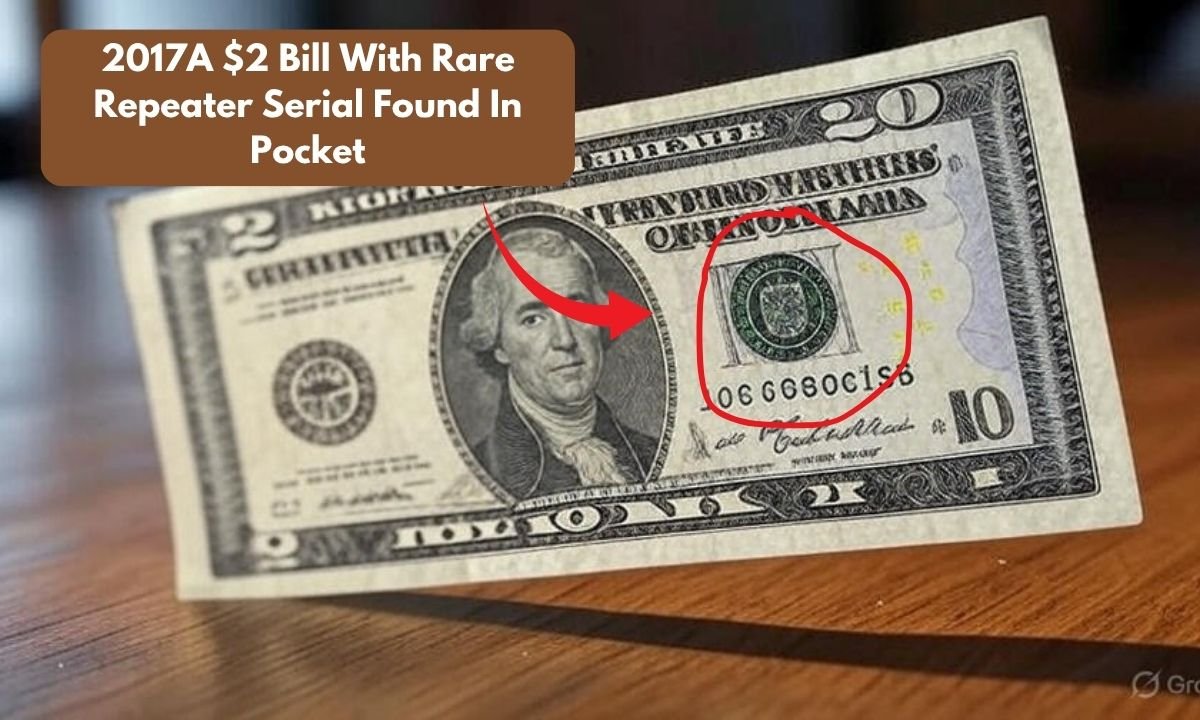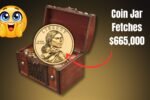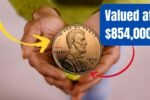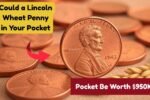Imagine pulling a crumpled $2 bill from your pocket, ready to spend it on a coffee, only to find out it’s worth $27,500! Sounds like a dream, right? Well, for one lucky person, this dream turned into reality with a 2017A $2 bill sporting a rare repeater serial number. This little piece of paper, often overlooked, is now making headlines in the world of currency collecting. Let’s dive into why this bill is so special, how you can spot a similar gem, and why you should start checking your wallet today!
What Makes the 2017A $2 Bill So Special?
You might be wondering, what’s so great about a $2 bill? After all, they’re not exactly common, but they don’t scream “valuable” either. The magic lies in the serial number. A repeater serial number is like a catchy song stuck in your head—it repeats itself in a pattern, like 12121212 or 45674567. These patterns are super rare because they happen by chance during printing, and the U.S. Mint doesn’t make many of them. The 2017A $2 bill that hit the jackpot had one of these unique repeating sequences, making it a collector’s dream.
This particular bill was found in near-perfect condition, which is like finding a shiny, unopened toy in its original box. Collectors go wild for bills that look brand new—no creases, no tears, just crisp paper. Combine that with the repeater serial number, and you’ve got a bill that’s worth way more than its face value. It’s like finding a golden ticket in a chocolate bar!
Why Are $2 Bills So Collectible?
$2 bills are already a bit of a mystery. They’re legal tender, but you don’t see them every day. Most people stash them away as novelties, thinking they’re just quirky. That’s exactly why they’re a goldmine for collectors! Since they’re not used as often as $1 or $5 bills, finding one in circulation with a rare feature like a repeater serial number is like spotting a unicorn in your backyard.
The 2017A series is fairly new, but don’t let that fool you. Even recent bills can be worth a fortune if they have the right quirks. Collectors aren’t just looking for old money; they’re hunting for unique patterns, errors, or limited runs. A $2 bill with a repeater serial number is like a rare Pokémon card—its value skyrockets because it’s one of a kind.
How to Spot a Valuable $2 Bill
Ready to check your wallet? Here’s how to spot a $2 bill that might make you rich. First, look at the serial number, which is printed on the front of the bill, usually in the top right and bottom left corners. A repeater serial number repeats a sequence, like 12341234 or 27272727. It’s like a mirror reflecting the same numbers twice. If you see a pattern like that, you’re off to a good start!
Next, check the condition. Is the bill crisp and clean, like it just came off the press? Or is it wrinkled and worn, like an old T-shirt? Collectors love bills in mint condition because they’re rare in everyday use. Finally, look at the series year, which is near Thomas Jefferson’s portrait on the front. For this jackpot, the 2017A series is the one to watch.
If you think you’ve got a winner, don’t spend it! A single fold can drop its value faster than a bad stock market day. Pop it into a protective sleeve and take it to a professional currency grader, like PMG or PCGS, to get it checked out. They’ll tell you if you’re holding a treasure or just a cool keepsake.
What to Do If You Find a Rare Bill
So, you’ve found a $2 bill with a funky serial number—now what? First, keep it safe. Think of it like a fragile glass ornament; you don’t want to damage it. Store it flat in a currency sleeve, and avoid cleaning or folding it. Next, get it appraised by a professional. They’ll grade its condition and confirm if it’s a repeater or another fancy serial number, like a ladder (12345678) or a solid (88888888).
You can sell your bill through auction sites like eBay or Heritage Auctions, or take it to a local coin shop. Just make sure you’re dealing with someone trustworthy—there are plenty of sharks out there looking to lowball you. Who knows? Your $2 bill could be the next big find, turning pocket change into a life-changing sum!
The Thrill of the Hunt
The story of the 2017A $2 bill worth $27,500 is like a modern-day treasure hunt. It reminds us that hidden gems can be hiding in plain sight, tucked away in wallets, drawers, or even between the pages of an old book. With every $2 bill you come across, there’s a chance you’re holding something special. It’s like playing the lottery, but instead of buying a ticket, you just need to look closely at your cash.
This discovery has sparked a wave of excitement, with people across the country digging through their change. The idea that something so ordinary could be worth thousands is enough to make anyone curious. So, next time you get a $2 bill, don’t just shove it in your pocket. Take a moment to check the serial number. You might just be holding a small fortune!
Conclusion
The 2017A $2 bill with a repeater serial number is proof that everyday items can hold extraordinary value. Its $27,500 price tag shows how rarity, condition, and a bit of luck can turn pocket change into a windfall. Whether you’re a collector or just someone with a few $2 bills lying around, this story is a reminder to stay curious. Check your wallet, inspect those serial numbers, and keep an eye out for that crisp, uncirculated bill. Who knows? The next jackpot could be yours, waiting to be discovered in the most unexpected place.
FAQs
What is a repeater serial number?
It’s a serial number where a pattern repeats, like 12341234 or 45454545, making it rare and valuable.
How do I know if my $2 bill is valuable?
Check the serial number for patterns like repeaters, and make sure the bill is in great condition. Get it appraised by a professional.
Where can I sell a rare $2 bill?
Try auction sites like eBay or Heritage Auctions, or visit a trusted local coin shop.




